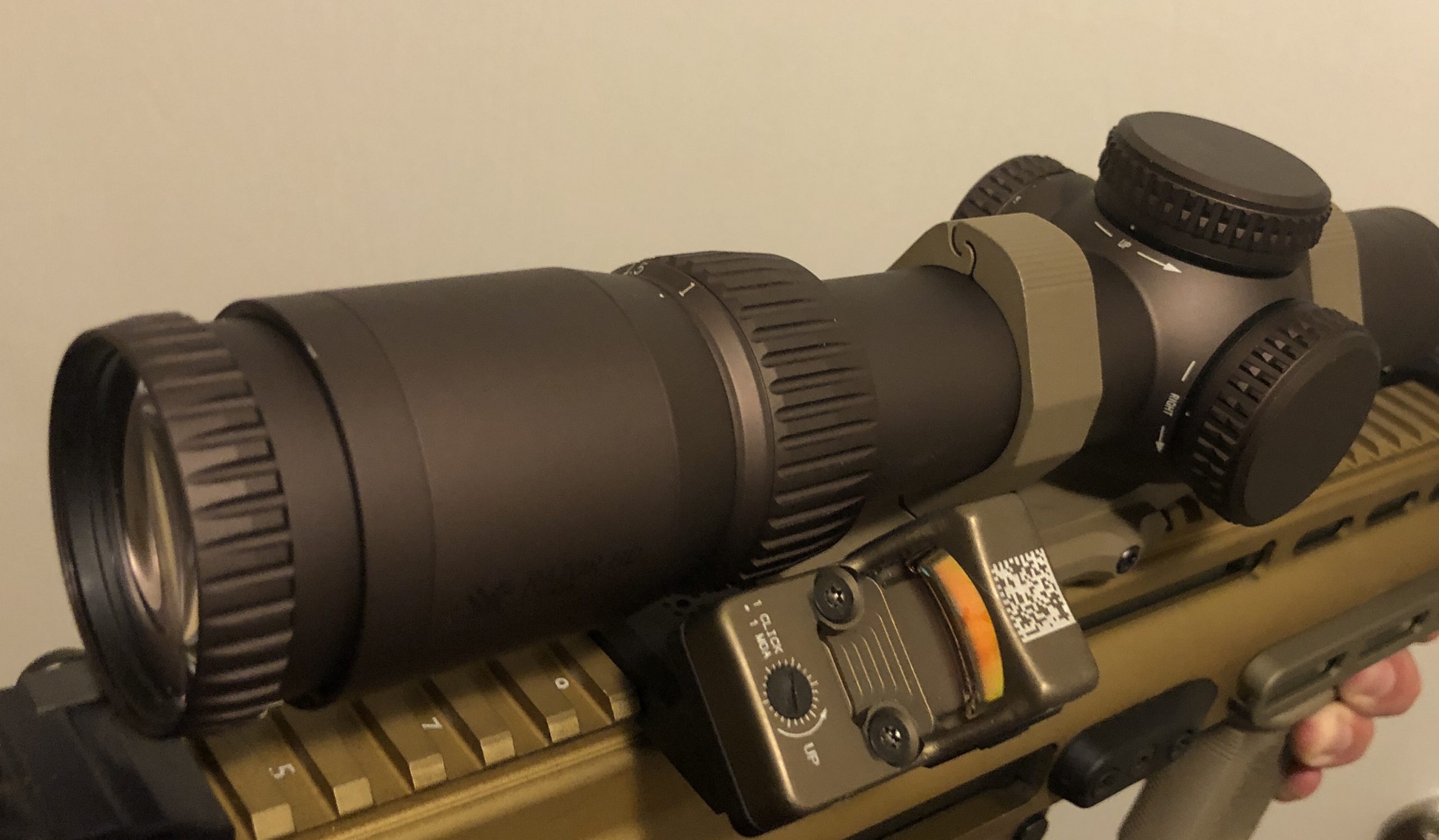Aaron Cowan discusses the role of offset sights on modern rifle systems. The video covers why you might consider adding one to your setup. If you don’t have 10 minutes for the video I’ll give you my .02 on the concept.

I started running on offset with the Trijicon HRS a few months back and tied it in with my March F 1-8x. The HRS is a Type 2 RMR built for the M17/M18 pistols. It serves equally well in the role of a backup optic and an extreme close range optic for the carbine.
Explain?
LPVO’s like the Razor serve an incredibly versatile role and allow a rifle to take advantage of its full effective range. But to do so the rifle zero has to correspond to those ranges. You are going to zero your primary optic, the LPVO, for 50 or 100 yards and know your trajectory for greater distances either by reading the scale and knowing your holds or following the BDC.
An offset dot gives you the additional flexibility to throw an extremely close zero on your rifle that does not have to be adjusted for. 10 yards is my go to and then I confirm hits at 50 yards. That optic and that zero grant you additional flexibility around your LPVO.
NOTE: An offset optic is going to have your shots arc off the centerline of the rifle since the rifle is canted. They will arc predictably, however. Shots fired through the offset optic (in my case, the HRS) will arc in the direction of the primary optic (in my case, the Razor). Imagine a football thrown that drifts left or right depending upon the direction the primary optic and rifle are angled and you’ll more or less envision the trajectory.
So what you now have with an offset optic is a quick solution for close shots/threats and one for using the rifle from an awkward angle where eye relief becomes a problem. The LPVO can be left dialed up to higher power without detriment to closer target engagements. The offset sight is capable of operating as a backup without removing a failed primary optic.
Unlike backup iron sights, the offset dot is an active part of your sighting systems. Meaning it can be part of an engaged training cycle and maintain active proficiency. Irons, as back up sights, are rarely in a position to be trained with. They require removing the primary sighting systems. Nobody wants to do that.
As a summarized list:
- An offset dot gives you a solution for extreme close distance shots that can be zeroed accordingly.
- An offset dot gives you a solution that does not have the eye relief requirements of the primary optic.
- An offset dot gives you a “no parallax” solution for quickly taking shots at awkward angles.
- An offset dot gives you a solution independent of the magnification setting currently on the primary optic.
- An offset dot gives you a durable backup that doesn’t require removing the primary optic to use



